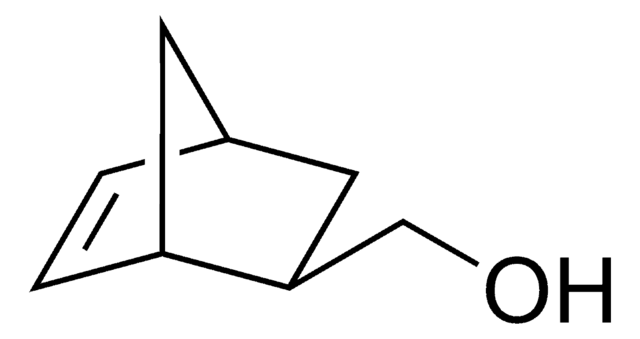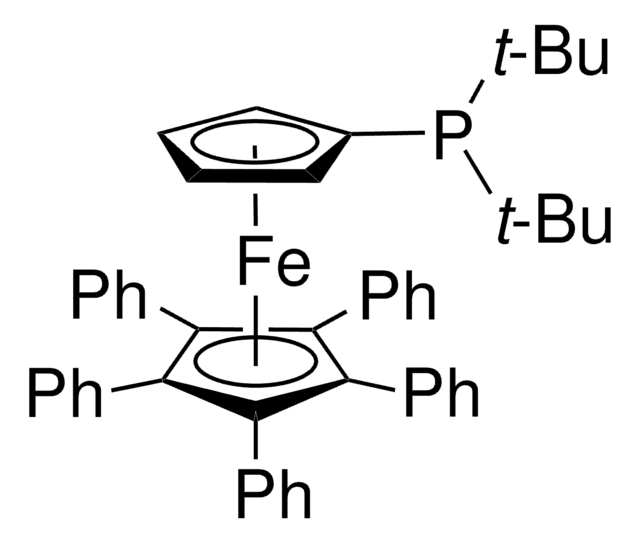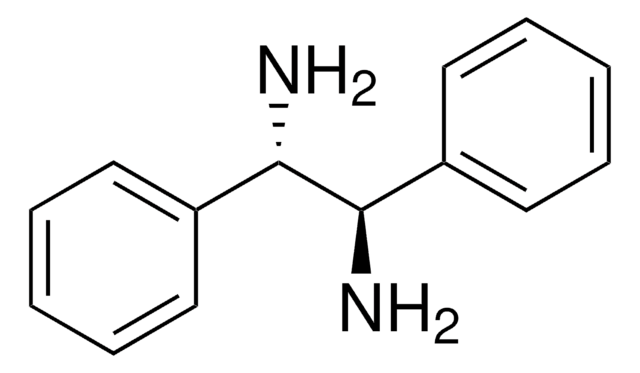추천 제품
분석
98%
refractive index
n20/D 1.5130 (lit.)
bp
79-80 °C (lit.)
density
0.948 g/mL at 25 °C (lit.)
SMILES string
CC(C)c1ccc(O)c(c1)C(C)C
InChI
1S/C12H18O/c1-8(2)10-5-6-12(13)11(7-10)9(3)4/h5-9,13H,1-4H3
InChI key
KEUMBYCOWGLRBQ-UHFFFAOYSA-N
유사한 제품을 찾으십니까? 방문 제품 비교 안내
일반 설명
2,4-Diisopropylphenol, commonly known as 2,4-propofol, is an isomeric form of propofol. EC50 Microtox (5min, 25°C) assay value of 2,4-diisopropylphenol is 2x10-4mM. It is formed as one of the reaction products from the reaction between boron fluoride with isopropyl phenyl ether.
애플리케이션
2,4-Diisopropylphenol may be used in the preparation of N,N-bis(3,5-diisopropyl-2-hydroxybenyl)-N′,N′-dimethyl-1,2-diaminoethane.
신호어
Warning
유해 및 위험 성명서
Hazard Classifications
Eye Irrit. 2 - Skin Irrit. 2 - STOT SE 3
표적 기관
Respiratory system
Storage Class Code
10 - Combustible liquids
WGK
WGK 3
Flash Point (°F)
230.0 °F - closed cup
Flash Point (°C)
110 °C - closed cup
개인 보호 장비
Eyeshields, Gloves, type ABEK (EN14387) respirator filter
rac-Lactide polymerization using aluminum complexes bearing tetradentate phenoxy-amine ligands.
Tang Z and Gibson VC.
European Polymer Journal, 43(1), 150-155 (2007)
T P Heil et al.
Journal of environmental science and health. Part. B, Pesticides, food contaminants, and agricultural wastes, 24(4), 349-360 (1989-08-01)
EC50 Microtox (5 min, 25 degrees C) assay values for 2-isopropylphenol, 3-isopropylphenol, 4-isopropylphenol, 2,4-diisopropylphenol, 2,5-diisopropylphenol 2,6-diisopropylphenol, 3,5-diisopropylphenol, carvacrol, thymol, thiophenol, and thiocresol ranged from 2 x 10(-2) mM for thymol (least toxic) to 2 x 10(-4) mM for 2,4-diisopropylphenol and
Organic Reactions with Boron Fluoride. V. The Rearrangement of Isopropylphenol, o-, m-and p-Cresyl Ethers.
Sowa FJ, et al.
Journal of the American Chemical Society, 55(8), 3402-3407 (1933)
Azmat Ali Khan et al.
European journal of medicinal chemistry, 46(10), 4878-4886 (2011-08-27)
Polyunsaturated fatty acids (PUFAs) have been reported to play a regulatory role in tumour growth progression. In the present study, we have synthesized ester derivatives of two important PUFA viz., linoleic acid (LA) and arachidonic acid (AA) with propofol, a
Shanker Karunanithi et al.
eNeuro, 7(1) (2020-02-06)
Propofol is the most common general anesthetic used for surgery in humans, yet its complete mechanism of action remains elusive. In addition to potentiating inhibitory synapses in the brain, propofol also impairs excitatory neurotransmission. We use electrophysiological recordings from individual
자사의 과학자팀은 생명 과학, 재료 과학, 화학 합성, 크로마토그래피, 분석 및 기타 많은 영역을 포함한 모든 과학 분야에 경험이 있습니다..
고객지원팀으로 연락바랍니다.







![Bicyclo[2.2.1]hept-2-ene 99%](/deepweb/assets/sigmaaldrich/product/structures/270/492/95fd4909-6108-4858-8c94-609b54387149/640/95fd4909-6108-4858-8c94-609b54387149.png)

